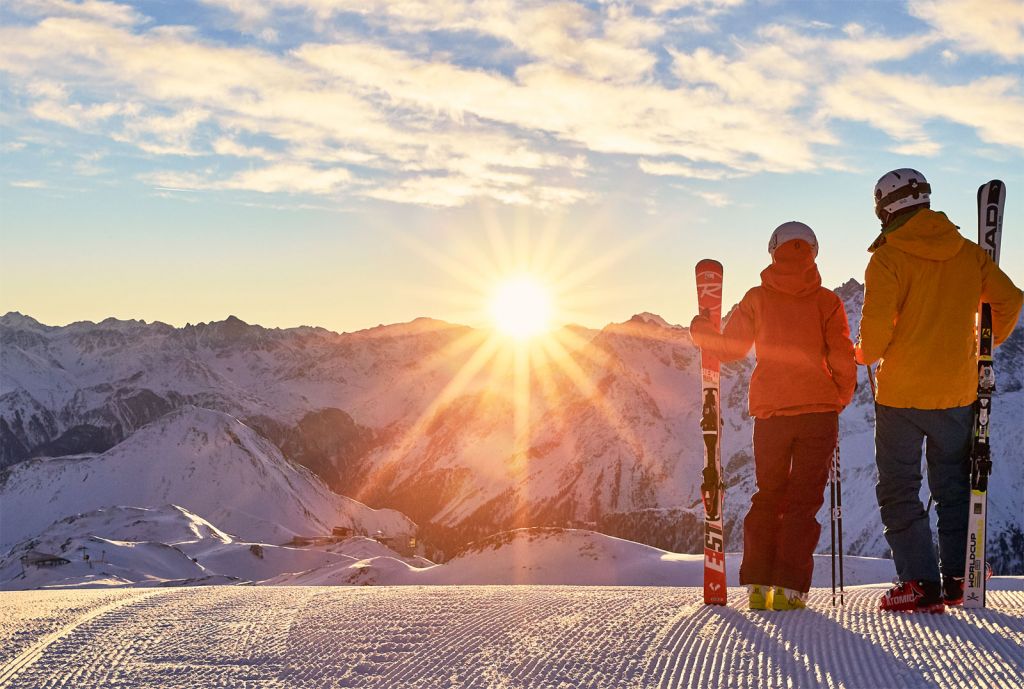
Luxurious Magazine’s Sabi Phagura heads to the slopes of Ischgl in Austria to finally try her hand at skiing.
What’s the cut-off age for starting to learn how to ski? Surely, it’s a sport you need to take up as a child? Apparently not. Just as health experts have been saying for years about exercise and fitness, skiing professionals say it’s never too late to start.
As an active, adventurous, fitness-loving individual, people are often miffed when I say I don’t ski. And why wouldn’t they be? I am often found starting each year in a ski resort. But my love of tobogganing and snowshoe hiking has always taken over, and well, the actual skiing always fell by the wayside.
But I can’t lie; I have secretly wanted to learn and be part of the club.
So, when the invite presented itself to spend a few nights at Hotel Madlein, in celeb-magnet trendy Ischgl, it was a no-brainer.
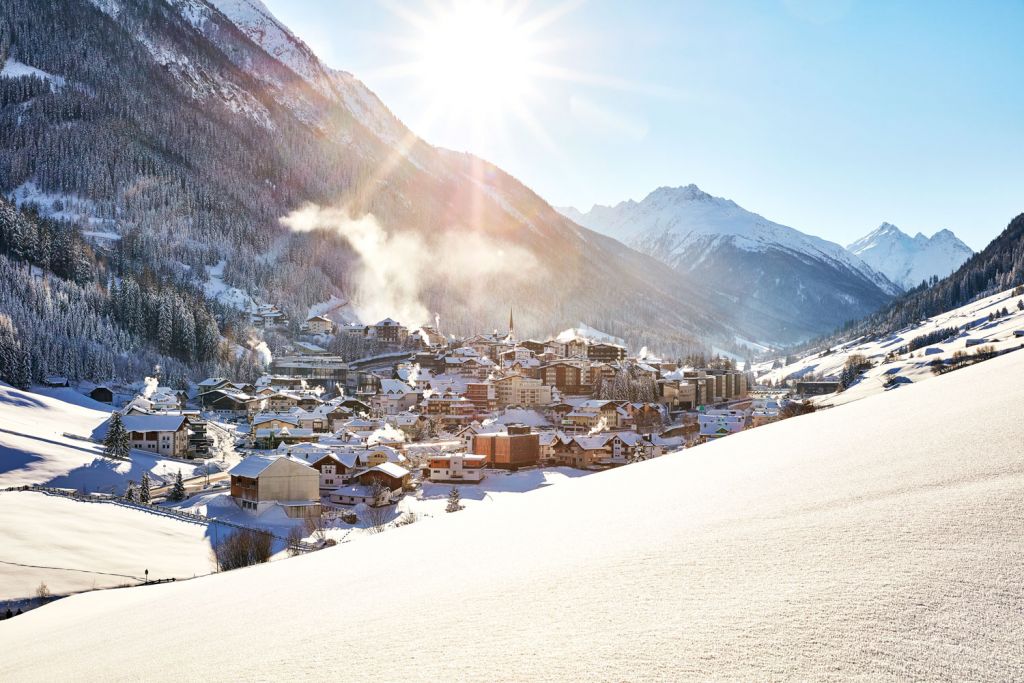
Ischgl has been a premier destination for many Europeans over the years and has recently been acquiring a broader following from many other countries, including the Brits. And it’s not just because of the quality of the pistes, but the music too.
Ischgl has become equally famous for its start and end-of-season Top of the Mountain concerts, attracting A-list international stars, including Elton John (his piano alone was airlifted to the stage), Mariah Carey, Pink, Kylie Minogue, Bob Dylan and Tina Turner, to name a few. And as for the slopes, they are extensive with stunning scenery.
The 239-kilometre Silvretta Arena ski area extends across the Swiss border to the Engadin resort of Samnaun and is loved by mileage-hungry intermediates who enjoy covering lots of ground daily.
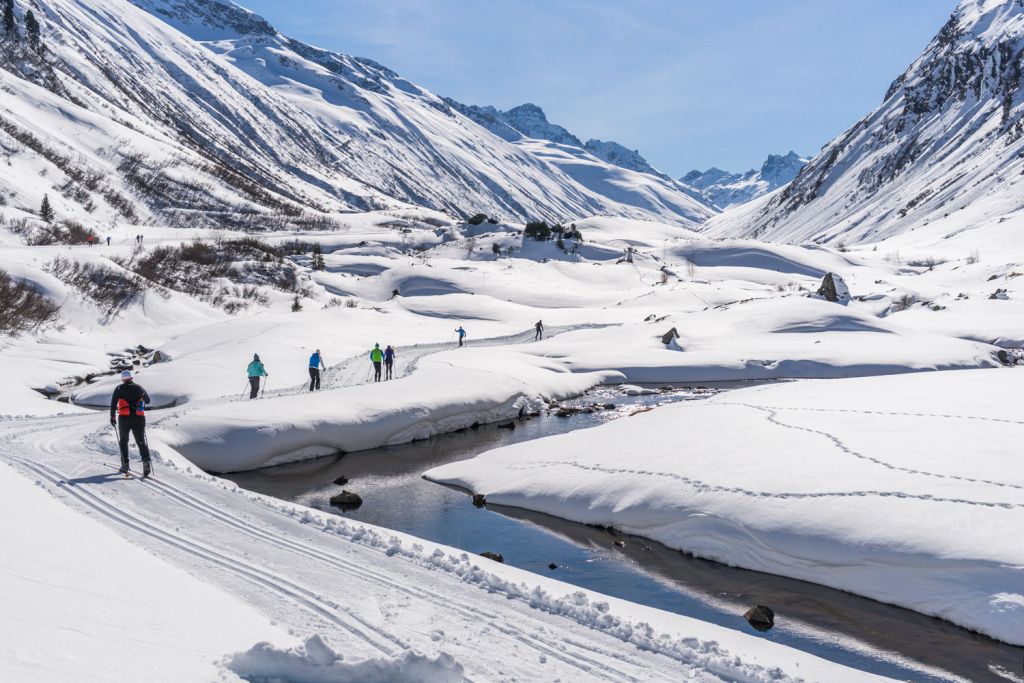
Fortunately, the Idalp, at 2,320 metres, near the biggest open-air arena of the Alps, also provides a perfect starting point for beginners. And this is exactly where I began my lessons in earnest with ski instructor Frances Younghusband (who has been skiing for 45 years and counting).
I was also kitted out at the connected hotel ski shop and caught the Fimbabahn cable car complete with heated seats.
Finding a positive and supportive mentor is key because they know how to read people and harness their strengths. Frances read me like a book, and encouraged me when I was lacking enthusiasm and corrected my mistakes. And above all, she was patient, which, in my humble opinion, makes a difference between succumbing to fear and overcoming it.
It’s a strange feeling having long planks attached to your feet and tempting to want to look at what the tips of your skis are doing at all times.
But Frances suggested looking about ten feet ahead instead. The next important lesson I learned was to bend the knees. “We’re not used to being in a squat position all day, but doing this forces you to shove your shins into the front of the ski boot, gaining control of your ski.,” explained Frances.
“It helps centre your upper body above your legs, keeping your balance over your sweet spot.”
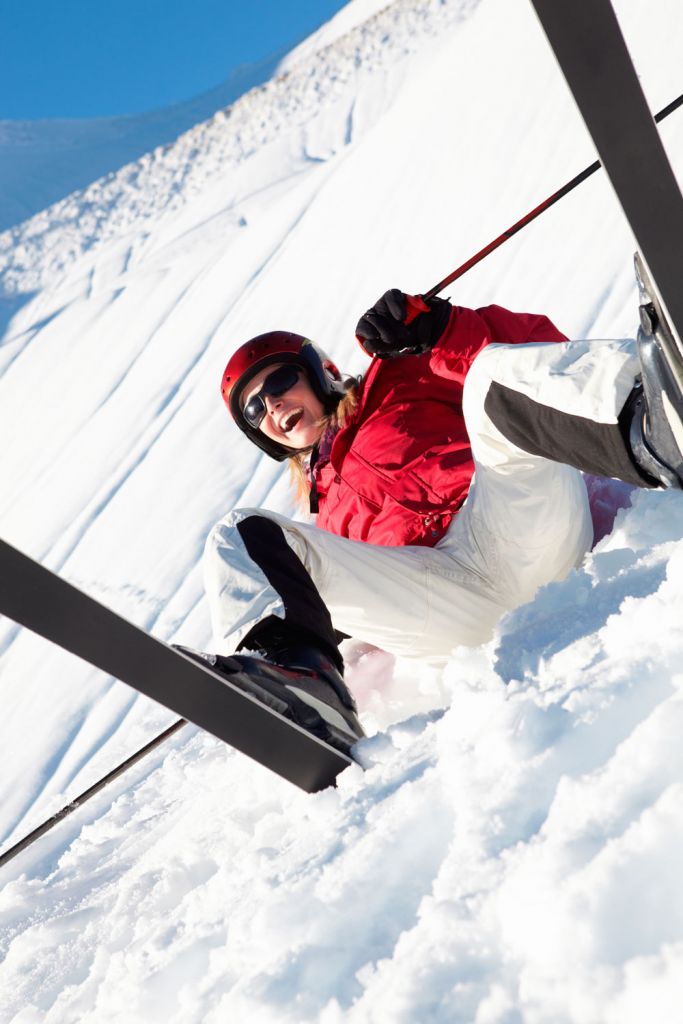
The next obvious lesson I needed to learn was how to stop – “Hello, snowplough”.
This is where the skis are in a “V” shape (think pizza slice), a stable position which acts as a brake. It’s one of the easiest ways to start learning to ski.
It didn’t look or feel like a very natural position because it isn’t, but I soon realised it gives you the most control and stability. It took a good few tries before I mastered it and had the confidence I wouldn’t fall.
Try, try and try again…
Falling is a part of learning.
You’ll fall…a lot. And that’s OK, and you pretty much have a soft landing. The key is not to get disheartened and to get back up again and try again.
I have to say getting up wasn’t the easiest of feats because of the skis, and I had to be hoisted up by Frances, almost dragging her down with me. And because I didn’t want to fall, I did my best to stay upright and used the snow plough whenever I needed to. But when I did face-plant, I self-assured myself that at least I didn’t slide down the slope.
Picking the right resort is key to learning to ski. While some mega-resorts have all the terrain in the world to choose from, the reality is if it’s on one mountain, it will dominate the landscape.
Here at Ischgl, there is a combination of excellent grooming and a proper ski school. The magic lift (an upward travellator) allowed me to repeat practice on the slopes again and again.
In less than an hour, Frances decided to introduce me to “traversing”.
In alpine skiing, “traversing” involves skiing back and forth almost perpendicular to the slope, so you descend by a few metres with each turn. Once you cross over to the far side of the trail, you turn and ski back to the opposite side.
I’ve seen skiers do it all the time, but it looked far too technical for a beginner like me. But gently encouraging me, Frances demonstrated how to rotate my body slightly so the uphill ski is further forward than the downhill ski.
By shifting my weight forward and rotating my ankles toward the hillside to the far edge, I then performed a parallel turn to begin traversing in the opposite direction. In reality, I didn’t follow these instructions straight away and kept snow ploughing.
Truth be told, I wanted to give up several times, not least because I couldn’t get my head around it but also because I was tired.
However, I persevered, and eventually, I actually got it!
But as with everything, learning to ski takes time and patience. And by the time I was strapped in my ski boots 24 hours later in neighbouring Galtür (another great ski learning area but on a smaller scale), I felt I had forgotten everything.
My instructor Andi had to go over everything I had covered the previous day several times before it all clicked again.
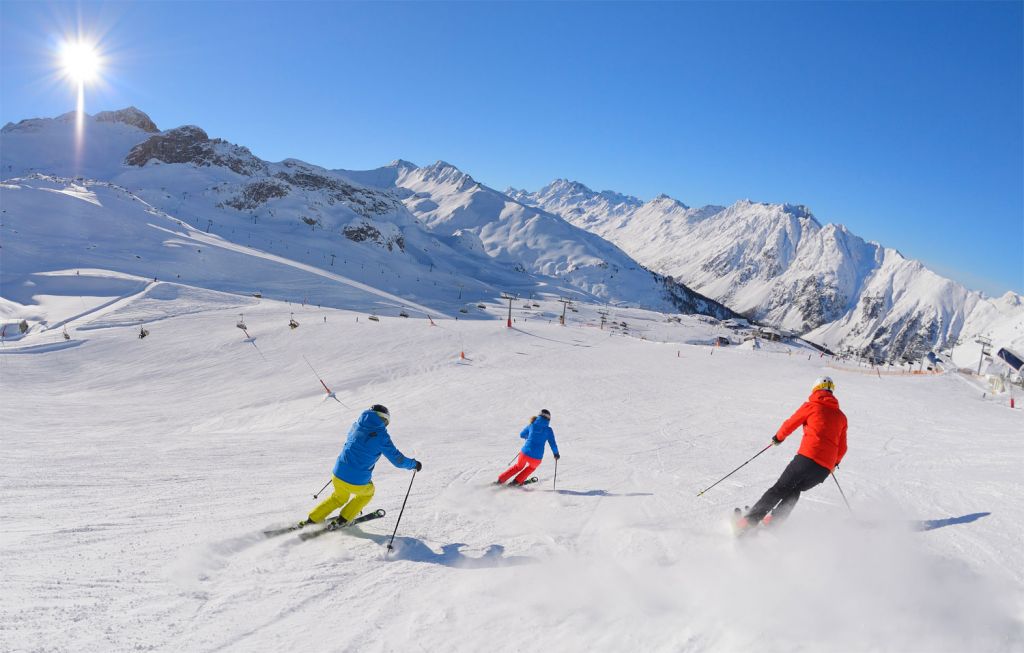
Fear is a highly motivational tool – it can be a great way to overcome it or stop you dead in your tracks. And what I learned during my two brief but vital sessions was that you have to step out of your comfort zone.
If you fall, just get up and try again. Recognising success is paramount.
I may have felt a failure after the countless times I fell, but when I was able to remain upright for more than two minutes, that was deemed a success. And I wasn’t going to miss the opportunity to celebrate small victories.
After four hours, with my legs hurting in places I was unaware could hurt and my concentration waning, it was time to sluice down the mountain for the all-important après ski.
Relaxing in the “Ibiza of the Alps”
Ischgl offers excellent skiing facilities with entertainment and a nightlife to match. Some lovingly call this Tirolean town the “Ibiza of the Alps”. Skiers can expect to find some of the wildest table-dancing bars in the Alps.
Although they are not all in the best of British good taste, be assured, there are plenty of other bars and clubs to sample in the town centre. And things are done in an orderly fashion here. Après-ski bars serve drinks until 8 pm before closing to offer dinner.
Revellers are then welcomed back again to dance the night away until the small hours of the morning.
One of the top hangouts just happened to be in our very own hotel. Pacha in the basement was convenient, not least because we were able to crawl back to our rooms before dawn. Ischgl’s slogan “Relax. If you can…” is clearly not an empty promise.
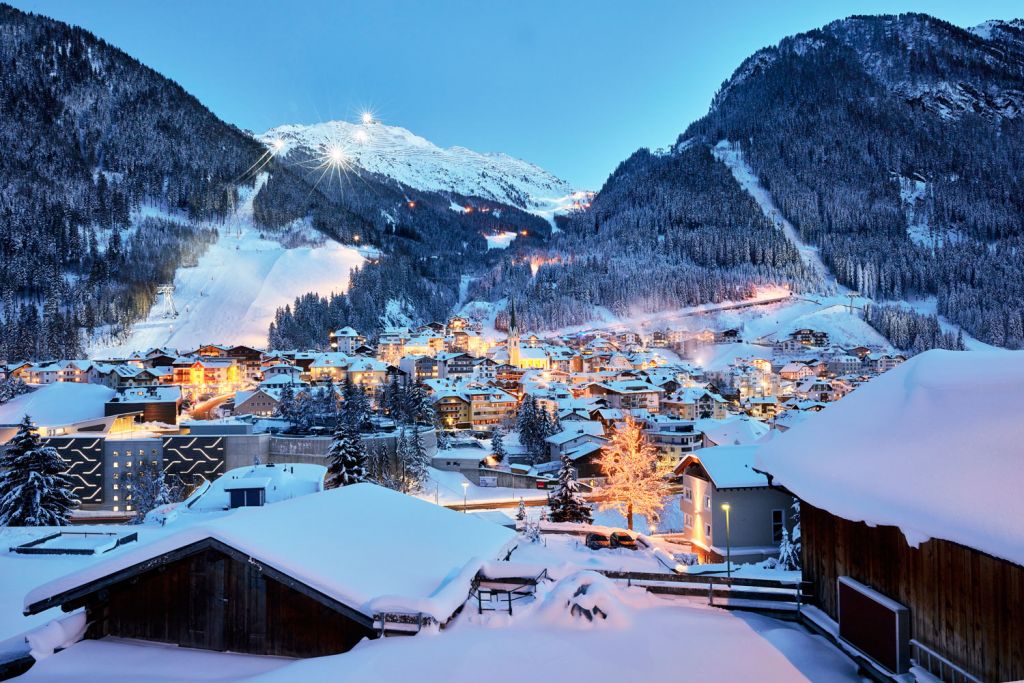
Highlights of the Paznaun Valley
However, the Paznaun Valley has not had a long tradition in the hospitality trade. On the contrary, its roots, as those of most valleys like it, lie with agriculture, which wrestled the bare necessities from the harsh and barren alpine world.
Those days are over, but they are not forgotten. And to give you a taste of a former life, it’s worth taking a short tour of the Paznaun Farmer Museum on the first floor of the Restaurant Walserstube in Mathon – a short taxi ride away from our hotel.
You will be immersed in a peasant world as one would have encountered just a few decades ago.
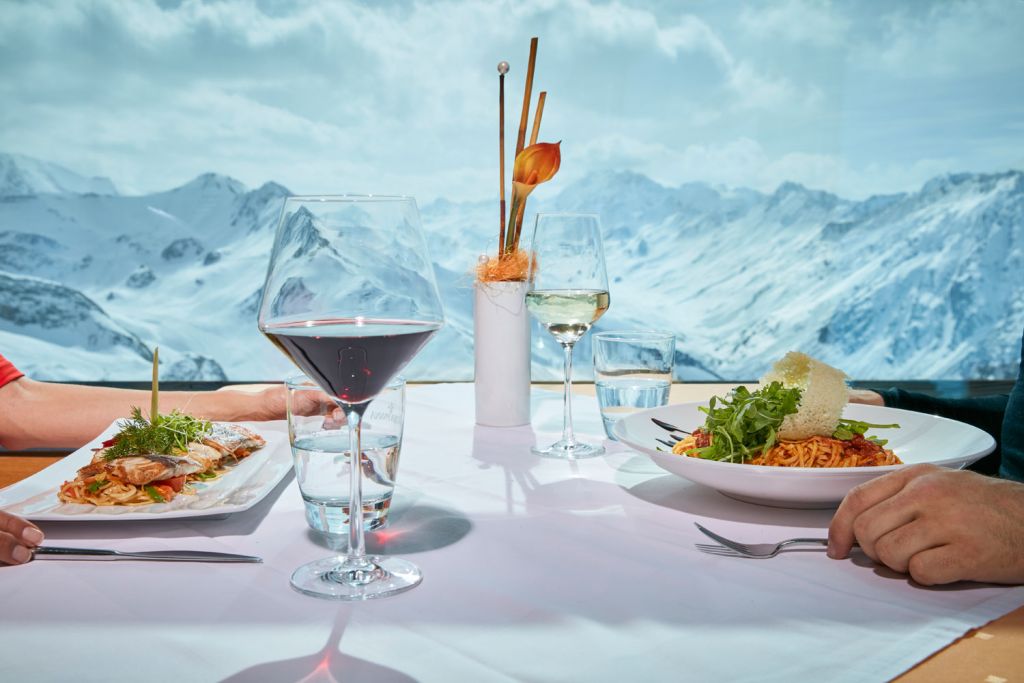
But the wholesome Austrian food remains the same. Tiroler Gröstl, Käsespätzle, and of course, Schnitzel, the national food – it can all be found in abundance. But hands down it was the Kaiserschmarrn that tickled my taste buds.
Literally meaning a meal fit for the kings, the fluffy shredded pancake pieces topped with jams, sweet sauces, fruit compotes and caramelised dry fruits were just the fuel needed after a day on the slopes.
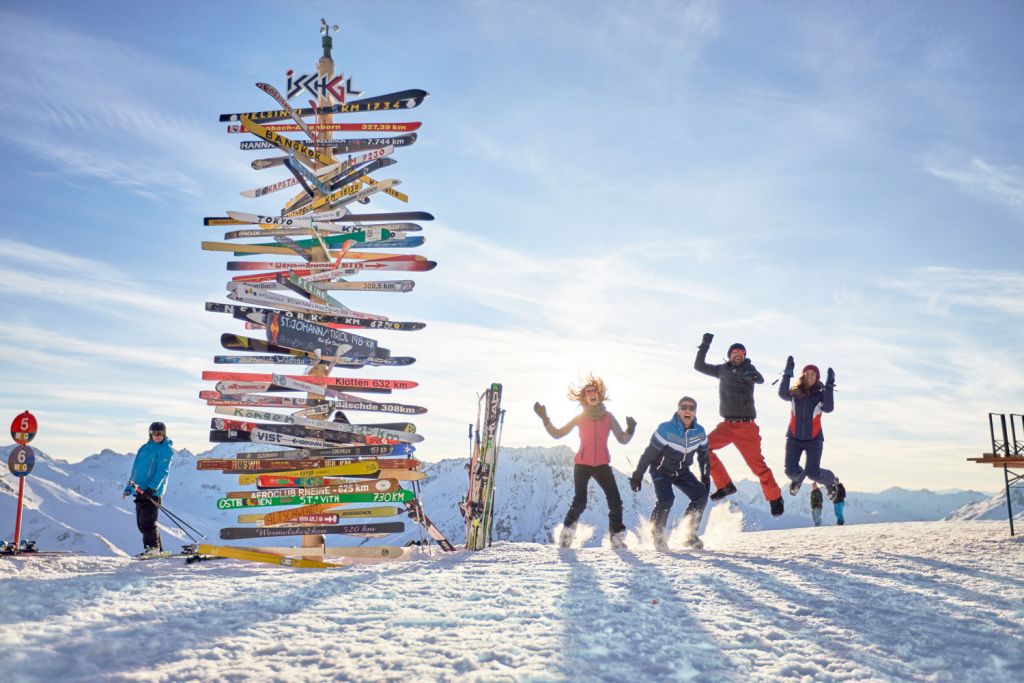
Learning to ski at any age is no different than trying to reinvent yourself. And thanks to huge improvements in equipment, apparel and ski run maintenance, it’s easier than ever to learn the sport.
Skis are lighter, boots fit better, waterproof outerwear is more breathable (I was kitted head-to-toe in Helly Hansen), and the slopes get groomed to perfection each night.
I may not have become a ballerina in the snow, but I wasn’t a human avalanche either. While cycling and hiking are amazing activities, skiing gives you an experience of freedom that’s difficult to match. The thrill of flying down a snow-covered hill really is something else…
Skiing in Ischgl, Austria – Where and How?
Inghams is the main UK tour operator to feature Ischgl and Galtür and is offering a seven-night ski holiday on a half-board basis at the four-star Hotel Madlein in Ischgl, costing from £1,339 per person based on two sharing, including return flights from London’s Gatwick to Innsbruck, plus airport transfers.
The package is valid for travel departing in March 2020. To book, visit www.inghams.co.uk/ski-holidays or call 01483 938 047. For more on Ischgl and Galtür, visit www.ischgl.com and www.galtuer.com, respectively.
Photos courtesy of TVB Paznaun-Ischgl.
![]()

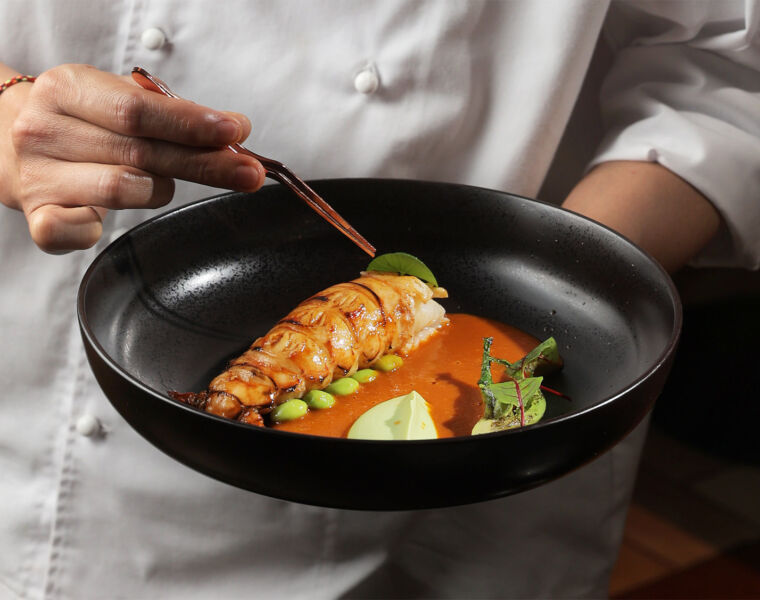
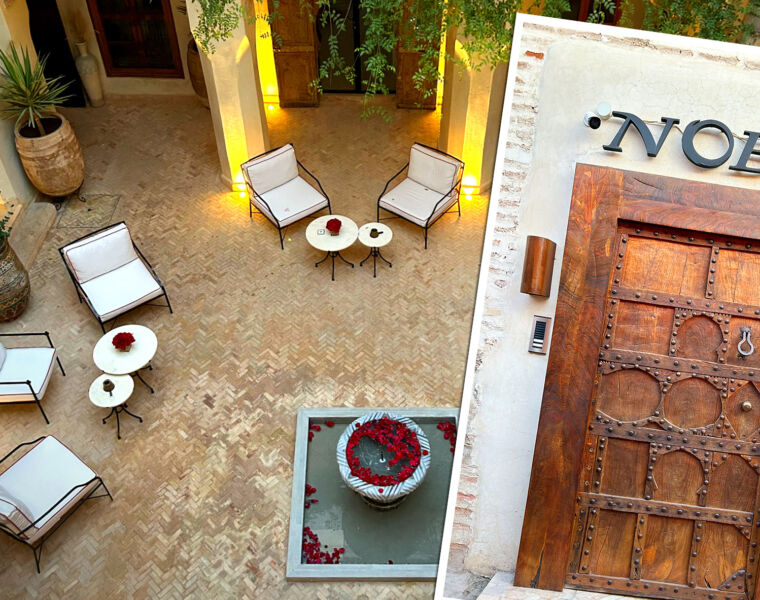
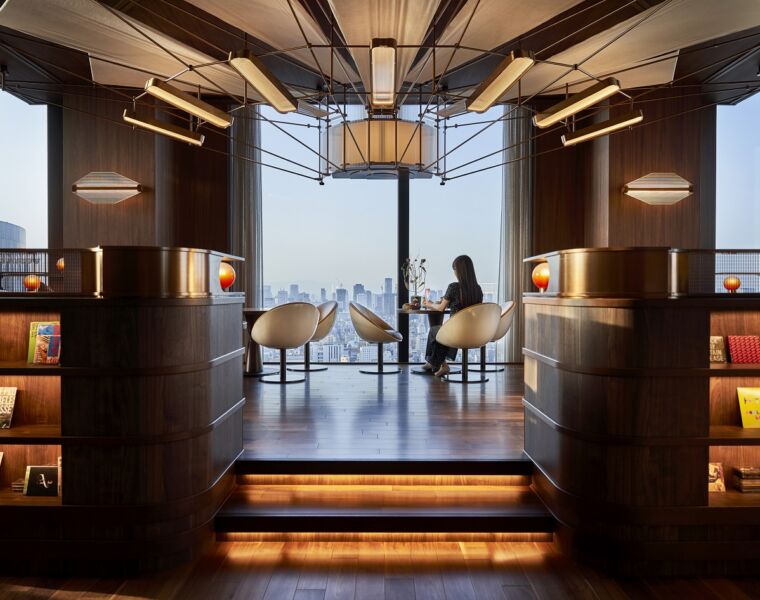
You must be logged in to post a comment.